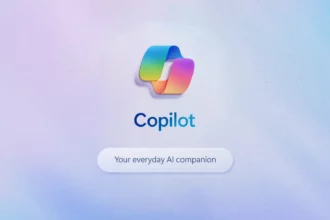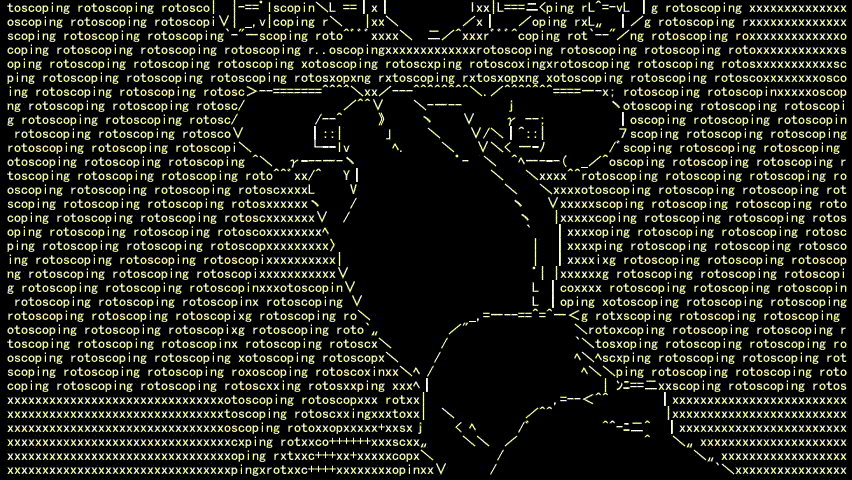Table of Contents
ToggleLLM Companies vs SaaS Giants: Who’s Winning in AI Monetisation?
Large Language Model (LLM) companies and SaaS giants currently adopt distinct strategies in AI monetisation. LLM firms show rapid revenue growth but high costs, lagging in profitability. SaaS giants generate more stable income by embedding AI into existing platforms, leading to steadier margins. Determining a clear winner depends on the criteria: speed of growth versus sustainable profitability.
Comparing Revenue and Costs
OpenAI’s revenue surged to $3.7 billion last year, yet its AI compute expenses hit $5 billion, pushing it into losses. Conversely, Microsoft’s AI revenue run rate exceeded $13 billion by early 2025, integrated within their Office and Azure ecosystem.
- LLM companies, including OpenAI, Anthropic, xAI, and Perplexity, generate over $11 billion collectively but remain unprofitable.
- Microsoft, as a SaaS giant, leverages its vast existing user base to increase AI revenue with lower relative costs.
Capital funding totals over $95 billion for top LLM firms, signifying investor confidence despite losses. SaaS firms reinvest cautiously, balancing growth with profitability.
LLM Companies: Growth at High Cost
LLM companies show rapid user acquisition and revenue growth:
- Perplexity reached $120 million ARR within two years.
- Anthropic’s revenue jumped 20-fold to over $2 billion in 18 months.
- ChatGPT Enterprise amassed 2 million business users, including 80% of Fortune 500 companies.
Pricing models include monthly subscriptions from free up to $250 and pay-per-use fees reaching $40 per million tokens. Stripe data reveals top AI startups achieve $5 million revenue in 24 months, faster than traditional software firms.
Despite these figures, high infrastructure costs stall profits. AI compute expenses grow faster than revenue, challenging long-term sustainability.
SaaS Giants: Steady Integration and Revenue
SaaS companies focus on embedding AI into current offerings rather than standalone AI products. Examples include:
- Microsoft’s AI revenue at $13 billion run rate, with tools like GitHub Copilot used by 77,000 organizations.
- Salesforce’s Agentforce adding $900 million ARR shortly after launch.
- Adobe Firefly generating 20 billion AI assets.
- Zoom’s AI Companion active in 3.7 million accounts, showing strong adoption.
This method integrates AI as enhancements within familiar workflows, increasing customer lifetime value rather than creating entirely new revenue streams.
These companies show cautious capital expenditure growth of 50%-63%, investing heavily in AI infrastructure but maintaining closer proximity to profitability compared to LLM rivals.
Diverging Business Models and Valuations
LLM companies aim to become foundational AI platforms, similar to major internet services or operating systems. They seek rapid user growth and broad API adoption.
SaaS giants focus on maximizing the value from existing customers by embedding AI features that improve product utility. Their growth is slower but more predictable.
| Aspect | LLM Companies | SaaS Giants |
|---|---|---|
| Primary Goal | Build AI platforms; drive user growth | Enhance existing products; expand customer value |
| Revenue Model | Subscriptions, pay-per-use APIs | Embedded AI in existing software suites |
| Profitability | Currently negative, high burn rate | Closer to profitability, stable margins |
| Valuation Multiples | Very high (e.g., Perplexity at 75x revenue) | Moderate, steady growth |
Long-Term Outlook and Sustainability
LLM companies lead in rapid revenue milestones but face a tough path to profitability due to escalating costs. Their business models require sustained capital and investor patience.
SaaS giants take a measured approach, growing AI revenue steadily by enhancing their established software suites. This strategy better supports long-term financial stability.
The future likely involves coexistence. LLM firms might dominate foundational AI services, while SaaS entities continue to optimize customer experiences.
Key Takeaways
- LLM companies show impressive growth but operate at a loss due to high compute costs.
- SaaS giants generate higher AI revenue integrated into their platforms with better margins.
- LLM firms aim to build new AI platforms; SaaS firms enhance existing products.
- Valuations differ widely, reflecting different risk and growth profiles.
- Long-term success depends on AI monetisation that balances growth with sustainable profit.
LLM Companies vs SaaS Giants: Who’s Winning in AI Monetisation?
Are Large Language Model (LLM) companies outpacing SaaS giants in monetising AI? The short answer: It depends on your lens. LLMs sprint quickly in revenue growth and user acquisition, but SaaS firms juggle steadier profits with cautious AI integration. Both paths have winners and trade-offs.
Let’s dive into the numbers, strategies, and future outlooks of these two AI powerhouses. Robotics won’t take our jobs just yet, but the AI money race is heating up—with plenty of twists!
Rapid Growth but Burning Cash: The LLM Story
The likes of OpenAI, Anthropic, xAI, and Perplexity represent the fast-moving, high-risk category of AI. Last year, OpenAI raked in $3.7 billion in revenue. Sounds impressive, right? Here’s the kicker: their compute costs soared to $5 billion, which means they’re basically running on Red Bull and venture capital enthusiasm.
Collectively, these AI-first brands bring in a solid $11 billion annually, yet remain deep in the red. Perplexity dazzled by hitting $120 million ARR under two years. Anthropic grew twentyfold in 18 months, passing $2 billion in yearly revenue. Their valuations? Jaw-dropping. OpenAI sits at 33x revenue, Anthropic 31x, and Perplexity at an astronomical 75x. Investors are clearly buying the dream of LLMs as foundations of the future digital world.
How do they monetise? Mostly through subscriptions (free to $250 per month) and pay-per-use fees reaching $40 per million tokens. Enterprise clients love them too: ChatGPT Enterprise boasts 2 million business users as of March 2025, with 80% of Fortune 500 companies onboard. Not bad for a few years in the game!
But growth comes at a cost. Stripe data signals these AI companies reach $5 million in annual revenue faster than traditional software firms, just 24 months versus the old timeline. The speed impresses, but the profitability problem remains unsolved. AI’s voracious appetite for compute keeps costs running faster than revenue growth.
The SaaS Giants Play It Safe—and Win Slowly
Meanwhile, the established SaaS kings like Microsoft, Salesforce, Adobe, and Zoom take a more cautious, integration-first approach to AI monetisation. Microsoft’s AI revenue hits $13 billion annual run rate by early 2025—a 175% year-on-year jump—that’s embedded inside familiar tools like Microsoft 365 and Azure.
Users may not notice AI as a separate product here, but as a feature toggled on inside apps they already use daily. GitHub Copilot powers 77,000 organisations; Salesforce’s Agentforce added $900 million ARR in 90 days after launch. Canva’s Magic Studio tools handled over 16 billion uses; Adobe Firefly’s assets topped 20 billion generations.
This strategy is less flashy but financially savvy. SaaS companies invest heavily in AI infrastructure—capital expenditures spiked between 50% to 63% last year—but keep operational models closer to profitability compared to LLM startups. They don’t try to replace humans with AI; they make the workforce smarter. This gradual AI embedment cultivates long-term value rather than rapid growth at all costs.
Divergent Paths: Platforms vs. Feature Enhancements
Here’s where the plot thickens: LLM companies and SaaS giants aren’t even playing the same game.
- LLM firms aim to become horizontal platforms—foundational services akin to the internet or mobile OS. They want their AI to be the base everyone builds on.
- SaaS giants use AI to enhance existing products and keep customers happier, aiming to maximize lifetime value rather than chase new customers aggressively.
This difference reflects in valuations and investor attitudes. LLM startups command sky-high multiples fueled by hopes for platform dominance. SaaS firms grow more slowly in user numbers but operate within proven profitability frameworks.
It boils down to this: do you bet on high-risk, potentially high-reward platform plays? Or steady, incremental AI enhancement in established ecosystems? Both approaches coexist because they serve different market needs.
The Long Game: Speed vs. Sustainability
LLM companies shell out billions for computing power to fuel rapid development and user acquisition. They zoom to revenue milestones in record time but face unresolved profitability challenges. The “speed to revenue” story dazzles investors at demo days but behind the scenes, economic engines remain under heavy construction.
SaaS giants may seem slower, but they focus on sustainable margins. Their AI investments increase CAPEX but don’t upset cash flow tables much—they build AI features into what already works. This less glamorous but steadier path appeals to cautious shareholders who value long-term stability.
So, who truly wins in AI monetisation? From a pure speed perspective, LLMs win hands down. But if profitability, financial stability, and mature business models matter, SaaS companies hold their ground.
What This Means for Businesses and Investors
For enterprise buyers, this dual-track innovation means choice. Need bleeding-edge AI platforms to build new apps? LLM players offer unprecedented tools and huge APIs. But if you want reliable, integrated AI enhancements that improve familiar workflows, SaaS giants deliver with less disruption risk.
Investors eyeing AI have to balance the hype-fueled valuations of LLMs against SaaS’s steadier returns. LLM investments demand deep pockets, patience, and tolerance for volatility. SaaS may not shoot the lights out overnight, but their solid cash flows and user bases cushion the bets.
Recommendations and Final Thoughts
1. Watch the cost curve closely. LLM companies must tame compute expenses to unlock profits. Until then, growth is expensive theater.
2. Expect SaaS AI features to quietly revolutionise workplaces. Less flashy, but more embedded in day-to-day productivity.
3. Businesses should experiment with both models. Use LLM APIs to innovate new products while adopting SaaS AI tools to streamline current workflows.
4. Investors should diversify. Balancing high-growth, high-risk LLMs with established SaaS AI plays spreads risk and offers multiple exposure points.
In the end, AI monetisation is less about who’s “winning” now and more about how both types of companies evolve. And considering the $95 billion capital influx and growing adoption, the real victory will be for those who turn AI promise into sustained value. Until then, buckle up and enjoy the AI rollercoaster—it’s fast, complex, and far from over!
What are the main differences in monetisation strategies between LLM companies and SaaS giants?
LLM companies focus on subscription and pay-per-use pricing, targeting rapid revenue growth. SaaS giants integrate AI into existing products, enhancing customer lifetime value rather than launching standalone AI services.
Why are LLM companies growing fast but still unprofitable?
They scale user acquisition quickly but face very high compute and infrastructure costs. Despite strong revenue growth, these expenses keep them operating at large losses for now.
How do SaaS giants approach AI investment compared to LLM firms?
SaaS companies invest heavily in AI infrastructure but prioritize profitability and gradual integration. They use AI to improve current offerings instead of building entirely new platforms, maintaining steadier financial footing.
Which model shows better long-term sustainability: LLM platforms or SaaS AI integration?
LLM companies excel in growth speed but require more capital and risk. SaaS firms grow slower but have more predictable profits. Success depends on balancing margins against expansion pace over time.
Are LLM startups currently more valuable than SaaS companies?
LLM startups have higher valuation multiples based on future platform potential. SaaS companies trade at lower multiples, reflecting steady earnings and less speculative growth assumptions. Both valuations serve different investor expectations.





